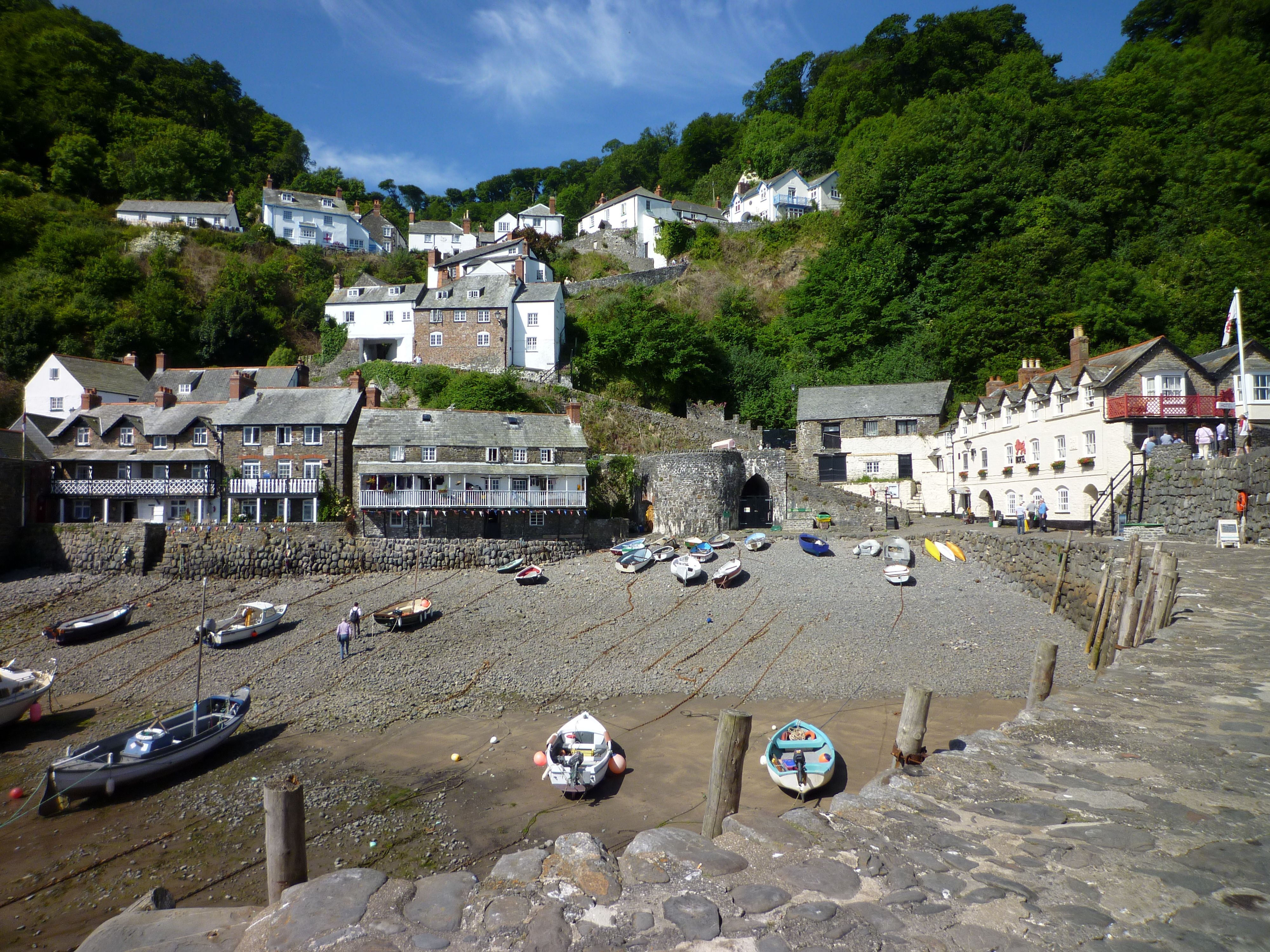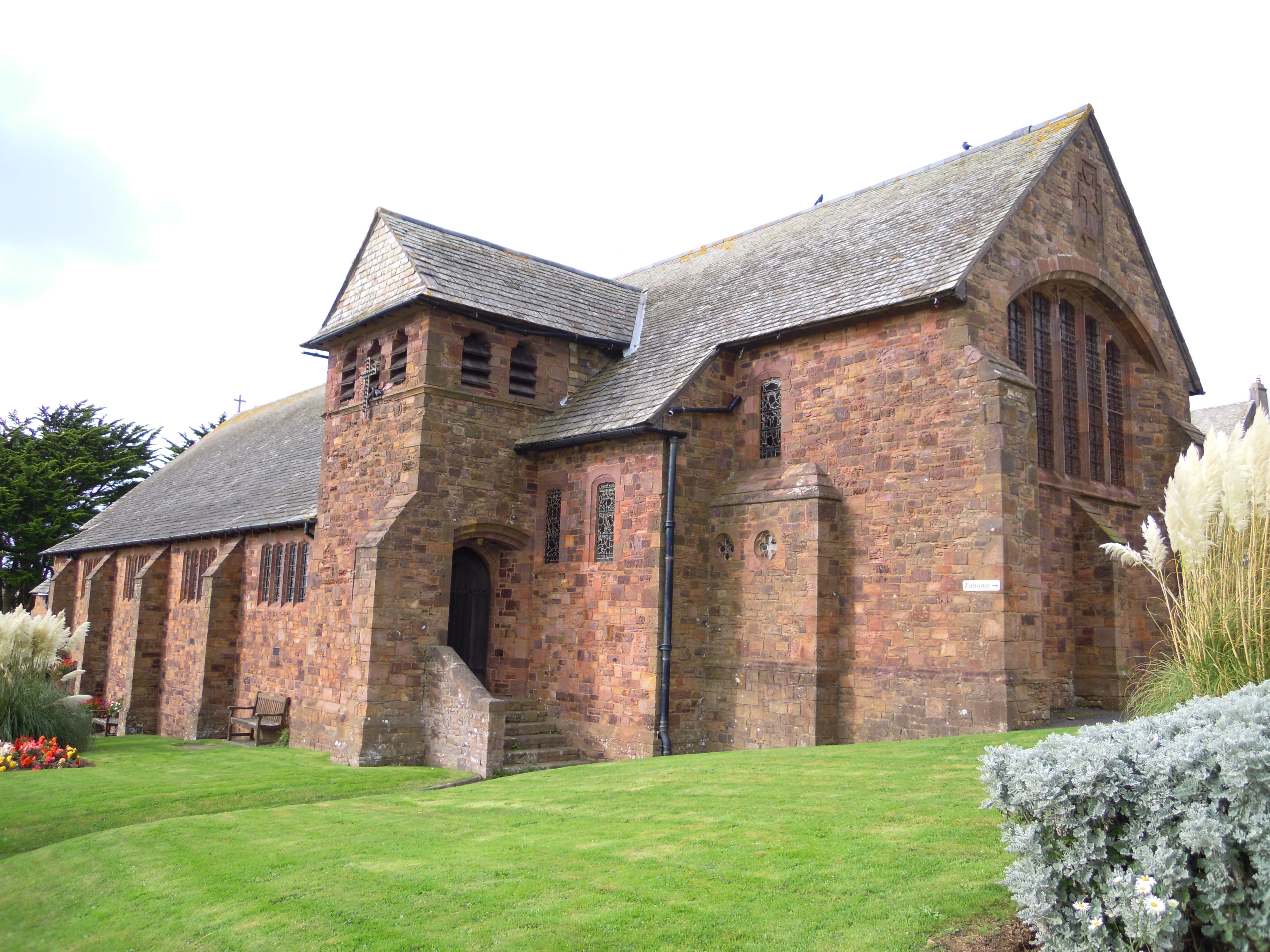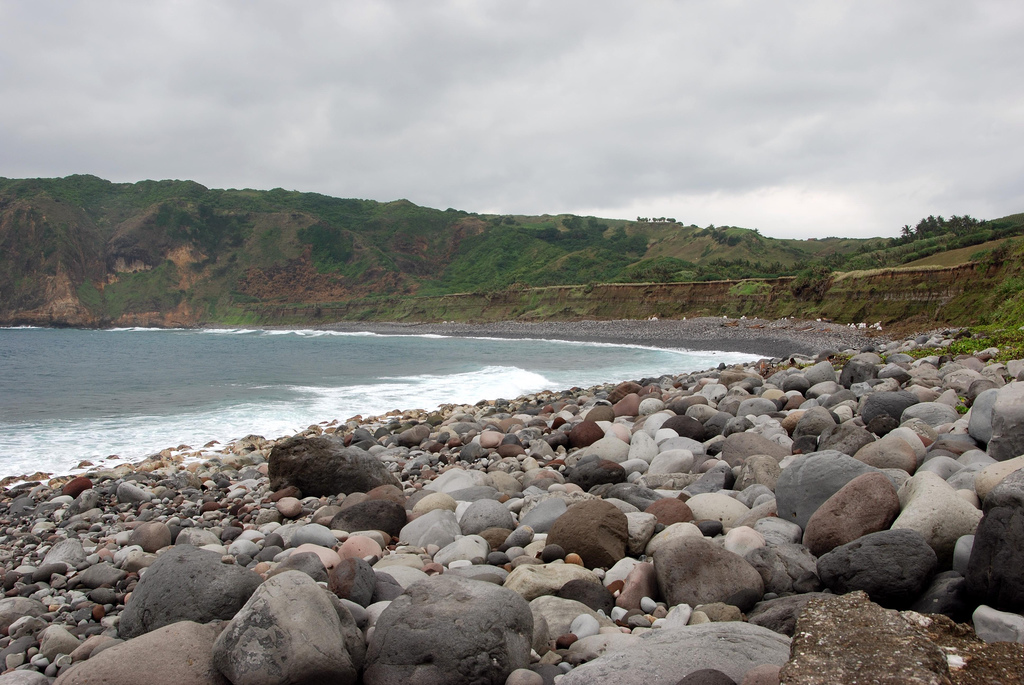|
Barnstaple Or Bideford Bay
Bideford Bay, also known as Barnstaple Bay and often shown on maps as Barnstaple or Bideford Bay, is a large area of water on the northwest coast of Devon in South West England, at the southwestern end of the Bristol Channel where it joins the Celtic Sea. The bay extends from Hartland Point in the southwest to Baggy point the northeast, and is partly sheltered by the island of Lundy, offshore. It takes its alternative names from the towns of Bideford and Barnstaple, located respectively on the rivers Torridge and Taw which flow into the bay. Topography and geology The north-facing coastline east of Hartland Point is backed by steep wooded or rocky cliffs with no natural harbours; this section is sparsely populated. The small former fishing village of Clovelly is a popular tourist destination, with a man-made harbour. Further east is the village of Westward Ho!, where there is a clearly defined raised beach platform, cut well above the level of the present beach by wave action ... [...More Info...] [...Related Items...] OR: [Wikipedia] [Google] [Baidu] |
Clovelly
Clovelly () is a privately owned harbour village in the Torridge District, Torridge district of Devon, England. The settlement and surrounding land belongs to John Rous, who inherited it from his mother in 1983. He belongs to the Hamlyn family, who have managed the village since 1738. The village, which is built into the wooded sea cliffs of the north Devon shore, has a steep pedestrianised Cobblestone, cobbled main street with traditional architecture. Due to the gradients, donkeys (now mostly replaced with sledges) have been used to move goods and cargo from Clovelly Bay. Visitors to the village entering via the visitor centre are required to pay an entrance fee which covers parking, entrance to two museums, Clovelly Court gardens, and an audiovisual history guide. The village is a tourist destination and is host to an annual Lobster and Crab festival. At the 2011 census, the parish population was 443, a decrease of 50 on the 2001 census. The island of Lundy is part of the W ... [...More Info...] [...Related Items...] OR: [Wikipedia] [Google] [Baidu] |
Sand Dune
A dune is a landform composed of wind- or water-driven sand. It typically takes the form of a mound, ridge, or hill. An area with dunes is called a dune system or a dune complex. A large dune complex is called a dune field, while broad, flat regions covered with wind-swept sand or dunes, with little or no vegetation, are called '' ergs'' or ''sand seas''. Dunes occur in different shapes and sizes, but most kinds of dunes are longer on the stoss (upflow) side, where the sand is pushed up the dune, and have a shorter ''slip face'' in the lee side. The valley or trough between dunes is called a ''dune slack''. Dunes are most common in desert environments, where the lack of moisture hinders the growth of vegetation that would otherwise interfere with the development of dunes. However, sand deposits are not restricted to deserts, and dunes are also found along sea shores, along streams in semiarid climates, in areas of glacial outwash, and in other areas where poorly cemented san ... [...More Info...] [...Related Items...] OR: [Wikipedia] [Google] [Baidu] |
Devonian
The Devonian ( ) is a period (geology), geologic period and system (stratigraphy), system of the Paleozoic era (geology), era during the Phanerozoic eon (geology), eon, spanning 60.3 million years from the end of the preceding Silurian period at million years ago (Megaannum, Ma), to the beginning of the succeeding Carboniferous period at Ma. It is the fourth period of both the Paleozoic and the Phanerozoic. It is named after Devon, South West England, where rocks from this period were first studied. The first significant evolutionary radiation of history of life#Colonization of land, life on land occurred during the Devonian, as free-spore, sporing land plants (pteridophytes) began to spread across dry land, forming extensive coal forests which covered the continents. By the middle of the Devonian, several groups of vascular plants had evolved leaf, leaves and true roots, and by the end of the period the first seed-bearing plants (Pteridospermatophyta, pteridospermatophyt ... [...More Info...] [...Related Items...] OR: [Wikipedia] [Google] [Baidu] |
Woolacombe
Woolacombe () is a seaside resort on the coast of North Devon, England, which lies at the mouth of a valley (or "combe") in the parish of Mortehoe. The beach is long, sandy, gently sloping and faces the Atlantic Ocean near the western limit of the Bristol Channel. Tourism Woolacombe is a popular destination for surfing and family holidays and is part of the North Devon Coast Area of Outstanding Natural Beauty. The beach has been managed by Parkin Estates Ltd since the 1970s and has over the years been recognised as one of the best beaches in Europe. It won the title of Britain's Best Beach in the "Coast Magazine Awards 2012" and was awarded the same prize of Britain's Best Beach in 2015 by ''TripAdvisor'', also ranking in their polls as 4th in Europe and 13th best in the world. The beach water quality is monitored regularly by the Environment Agency and was rated excellent from 2016 to 2020. The winter population is around 700 but during the summer large numbers of people come ... [...More Info...] [...Related Items...] OR: [Wikipedia] [Google] [Baidu] |
Morte Point
Morte Point is a peninsula on the north west coast of Devon, England, belonging to the National Trust. To the east is the village of Mortehoe and to the south is the seaside resort of Woolacombe. In the summer season, tractor and trailer rides are operated from the Mortehoe Heritage Centre onto the point for visitors to view the seals that live on the northern side. History Morte Point (literally meaning death-point) is notorious for being the site of many shipwrecks. Five ships were wrecked in the winter of 1852 alone; Bull Point Lighthouse was built just 1¼ miles (2 km) north east of the point.McCloy, A. and Whitehorne, S. ''Coastal Walks Around Britain'', New Holland, 2009, p.27 One shipwreck, a ship carrying a cargo of live pigs, gave a small cove to the south of the point the name of Grunta Beach (most of the pigs survived; one is supposed to have lived wild on seaweed for a year). The Royal National Lifeboat Institution The Royal National Lifeboat Institution ... [...More Info...] [...Related Items...] OR: [Wikipedia] [Google] [Baidu] |
Croyde Bay
Croyde is a village on the west-facing coastline of North Devon, England. The village lies on the South West Coast Path near Baggy Point, which is owned by the National Trust. It lies within the North Devon Coast Area of Outstanding Natural Beauty. Croyde village and its beach is on the Bristol Channel.The beach faces westwards toward the Atlantic Ocean, which begins at Hartland Point some 22 miles in the distance. Croyde Stream runs through the village, eventually leading to the beach. The centre of the village is roughly at the intersection of Hobbes' Hill, Jones' Hill and St. Mary's Road. At this spot, Croyde Bridge carries the road over the stream. Public services are provided by the North Devon District Council (NDDC) based in Barnstaple. The village is in the civil parish of Georgeham, and for ecclesiastical purposes within the Diocese of Exeter. Today The village has several small campsites, a small retail area and two large holiday parks; Croyde Bay Holiday Resort (o ... [...More Info...] [...Related Items...] OR: [Wikipedia] [Google] [Baidu] |
Surfing
Surfing is a surface water sport in which an individual, a surfer (or two in tandem surfing), uses a board to ride on the forward section, or face, of a moving wave of water, which usually carries the surfer towards the shore. Waves suitable for surfing are primarily found on ocean shores, but can also be found as standing waves in the open ocean, in lakes, in rivers in the form of a tidal bore, or wave pools. Surfing includes all forms of wave-riding using a board, regardless of the stance. There are several types of boards. The Moche of Peru would often surf on reed craft, while the native peoples of the Pacific surfed waves on alaia, paipo, and other such watercraft. Ancient cultures often surfed on their belly and knees, while modern-day surfing is most often ''stand-up surfing'', in which a surfer rides a wave while standing on a surfboard. Another prominent form of surfing is body boarding, where a surfer rides the wave on a bodyboard, either lying on thei ... [...More Info...] [...Related Items...] OR: [Wikipedia] [Google] [Baidu] |
Biosphere Reserve
A nature reserve (also known as a wildlife refuge, wildlife sanctuary, biosphere reserve or bioreserve, natural or nature preserve, or nature conservation area) is a protected area of importance for flora, fauna, funga, or features of geological or other special interest, which is reserved and managed for purposes of Conservation (ethic), conservation and to provide special opportunities for study or research. They may be designated by government institutions in some countries, or by private landowners, such as charities and research institutions. Nature reserves fall into different IUCN protected area categories, IUCN categories depending on the level of protection afforded by local laws. Normally it is more strictly protected than a nature park. Various jurisdictions may use other terminology, such as ecological protection area or private protected area in legislation and in official titles of the reserves. History Cultural practices that roughly equate to the establishmen ... [...More Info...] [...Related Items...] OR: [Wikipedia] [Google] [Baidu] |
Saunton Sands
Saunton Sands is a beach near the English village of Saunton on the North Devon coast near Braunton, popular for longboard surfing. Beyond its southern end, Crow Point, England is the mouth of the River Taw estuary. It is part of the Taw-Torridge estuary Area of Outstanding Natural Beauty and is at the centre of the UNESCO-designated North Devon's Biosphere Reserve, where Braunton Burrows lies at the heart. Saunton Sands Hotel overlooks the beach at the northern end. The beach is cordoned off a few times a year and the beach used as an airstrip for military transport planes, usually Lockheed C-130 Hercules of the Royal Air Force, to practise STOL beach landings and take offs. Flying kites is prohibited, accordingly, on part of the beach. Saunton Sands is popular with surfers because the beach is long, an unusually exposed westerly, and provides space for large groups. The beach has no life guards and is known to have dangerous riptides. Swimming here is dangerous and has res ... [...More Info...] [...Related Items...] OR: [Wikipedia] [Google] [Baidu] |
Longshore Drift
Longshore drift from longshore current is a geological process that consists of the transportation of sediments (clay, silt, pebbles, sand, shingle, shells) along a coast parallel to the shoreline, which is dependent on the angle of incoming wave direction. Oblique incoming wind squeezes water along the coast, generating a water current that moves parallel to the coast. Longshore drift is simply the sediment moved by the longshore current. This current and sediment movement occurs within the surf zone. The process is also known as littoral drift. Beach sand is also moved on such oblique wind days, due to the swash and backwash of water on the beach. Breaking surf sends water up the coast (swash) at an oblique angle and gravity then drains the water straight downslope (backwash) perpendicular to the shoreline. Thus beach sand can move downbeach in a sawtooth fashion many tens of meters (yards) per day. This process is called "beach drift", but some workers regard it as sim ... [...More Info...] [...Related Items...] OR: [Wikipedia] [Google] [Baidu] |
Spit (landform)
A spit (cognate with the word for a rotisserie bar) or sandspit is a deposition (geology), deposition shoal, bar or beach landform off coasts or lake shores. It develops in places where re-entrance occurs, such as at a cove's headlands, by the process of longshore drift by longshore currents. The drift occurs due to waves meeting the beach at an oblique angle, moving sediment down the beach in a zigzag pattern. This is complemented by longshore currents, which further sediment transport, transport sediment through the water alongside the beach. These currents are caused by the same waves that cause the drift. Hydrology and geology Where the direction of the shore inland ''re-enters'', or changes direction, for example at a headland, the longshore current spreads out or dissipates. No longer able to carry the full load, much of the sediment is dropped. This is called deposition. This submerged bar of sediment allows longshore drift or littoral drift to continue to transport sed ... [...More Info...] [...Related Items...] OR: [Wikipedia] [Google] [Baidu] |
Shingle Beach
A shingle beach, also known as either a cobble beach or gravel beach, is a commonly narrow beach that is composed of coarse, loose, well-rounded, and waterworn gravel, called ''shingle''. The gravel (shingle) typically consists of smooth, spheroidal to flattened, pebbles, cobbles, and sometimes small boulders, generally in the size range. Shingle beaches typically have a steep slope on both their landward and seaward sides. Shingle beaches form in wave-dominated locations where resistant bedrock cliffs provide gravel-sized rock debris. They are also found in high latitudes and temperate shores where the erosion of Quaternary glacial deposits provide gravel-size rock fragments. This term is most widely used in Great Britain.Neuendorf, Klaus K.E. Mehl, James P., Jr. Jackson, Julia A., 2011. ''Glossary of Geology'' (5th Edition). American Geosciences Institute. Narayana, A. C., 2016. ''Coastal landforms''. in Kennish, M.J., ed., pp. 143–157, ''Encyclopedia of Estuaries''. Spr ... [...More Info...] [...Related Items...] OR: [Wikipedia] [Google] [Baidu] |






